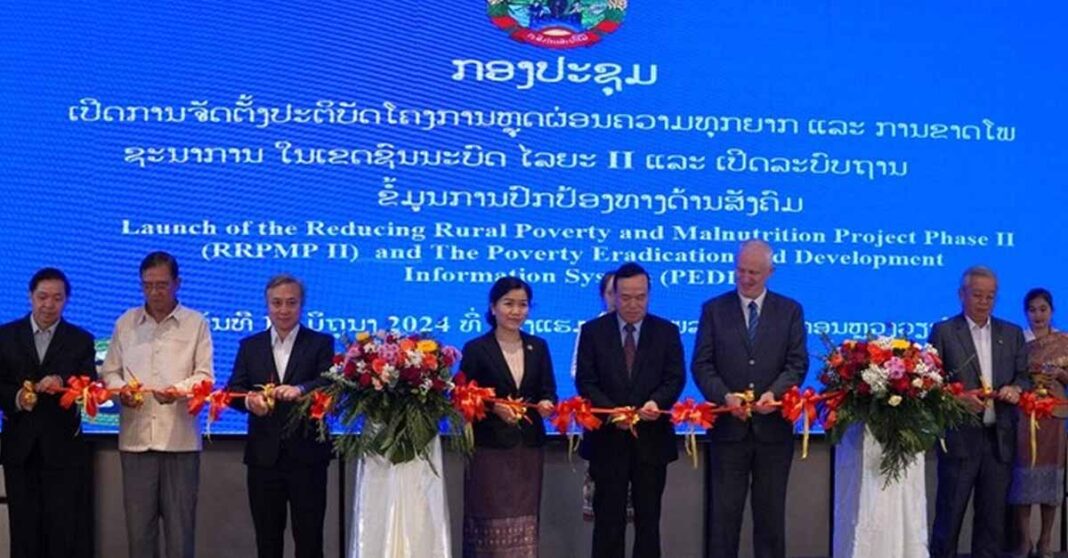Laos has launched the second Reducing Rural Poverty and Malnutrition Project. Supported by the World Bank, this initiative aims to bring additional resources to improve nutrition and raise incomes in 25 of the country’s poorest districts.
The project is part of the broader Nutrition Convergence program, which also entered its second phase on 11 June, designed to coordinate five World Bank-financed projects to accelerate the reduction of stunting in Laos.
The USD-37-million Reducing Rural Poverty and Malnutrition Project will specifically focus on nutrition-improvement efforts that will benefit around 85,000 people. It expands the government’s Helping Hand conditional cash transfer program, which started in 2021 in 12 districts in Xiengkhouang, Houaphanh, Phongsaly, and Oudomxay provinces, to an additional 13 districts in Savannakhet, Salavanh, and Sekong.
The program provides cash transfers to families in need who are listed on Laos’ first social registry, a database of socioeconomic information that will allow government programs to better target poor and vulnerable households.
The Ministry of Agriculture and Forestry will oversee the coordination of rural poverty reduction programs in Laos and will manage the project, while the Ministry of Planning and Investment will lead the coordination, monitoring, and evaluation of Nutrition Convergence to support the National Plan of Action on Nutrition 2021-25.
“Undernutrition in a child’s first thousand days affects physical and cognitive development for their whole lives, costing the Lao economy around USD 200 million per year, or 2.4 percent of GDP,” said World Bank Country Manager for Laos, Alex Kremer. “Cash transfers to families in need are a direct and effective way of alleviating poverty, improving diet, and encouraging improved health. This project will significantly increase the number of vulnerable people receiving assistance.”
A World Bank survey conducted in early 2024 revealed that 81 percent of households were affected by inflation, with over 60 percent reporting reduced food intake as a coping mechanism. As a result, malnutrition rates, already high in poorer areas of the country, are at risk of rising.
In 2017, about 33 percent of Lao children under five were stunted (excessively short for their age), 21 percent were underweight, and 9 percent qualified as wasted — too thin for their height. Malnutrition particularly affects the poor, ethnic groups, and children in rural and upland areas.
In northern Laos, average stunting rates are close to 50 percent and are even higher among some ethnic groups, with no sign of improvement since 2017. The government has set a target of reducing stunting to a rate of 25 percent by 2025.
Initial results show the first phase of the convergence program has been effective in mitigating the negative effects of COVID-19 on child nutrition, improving the diversity of children’s diets, and boosting services such as growth monitoring. Stunting and wasting among children under two in target areas would have been 7.7 and 3.4 percentage points higher without the program



